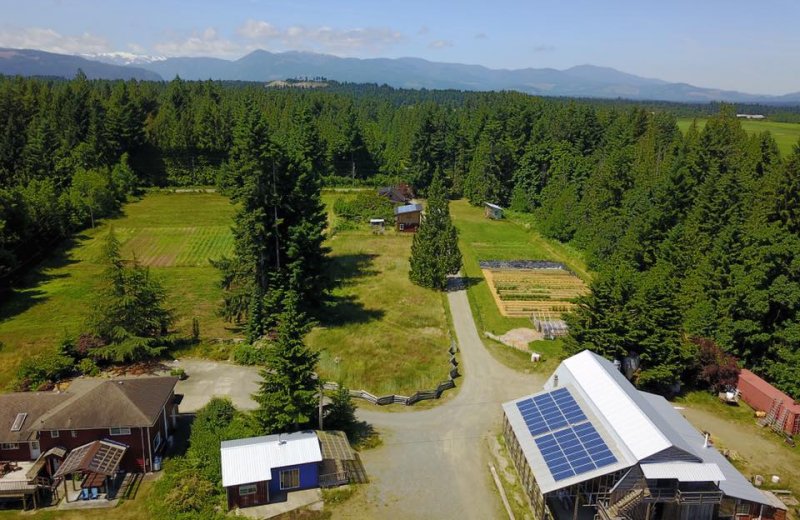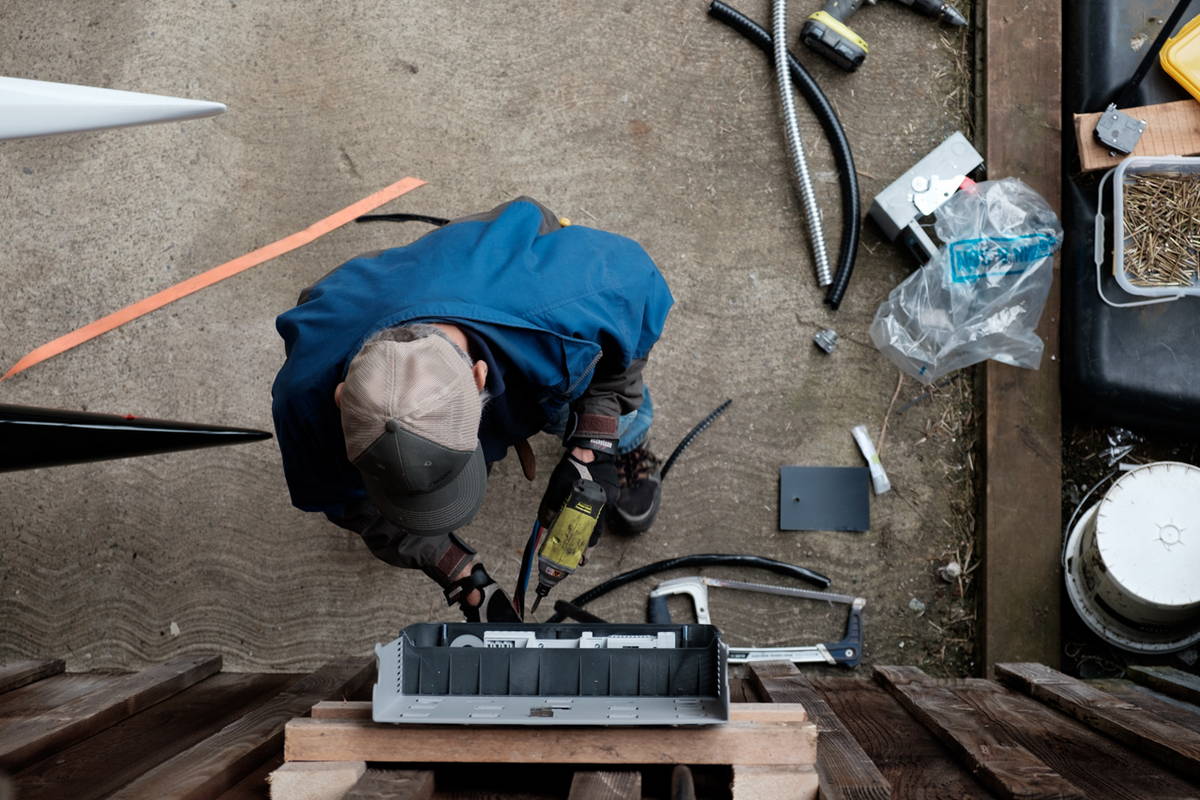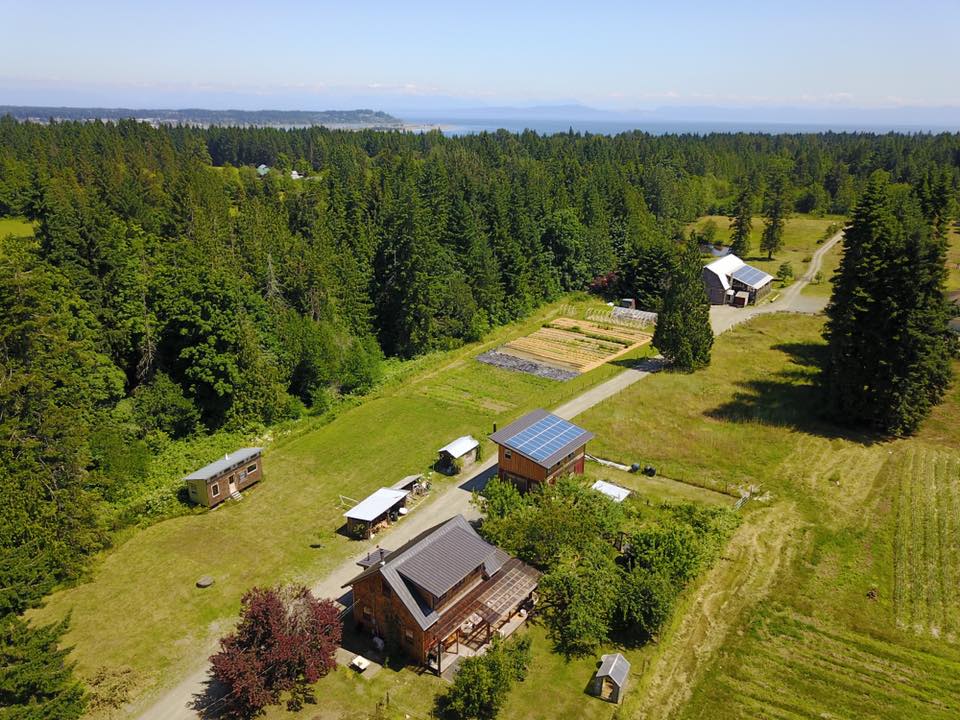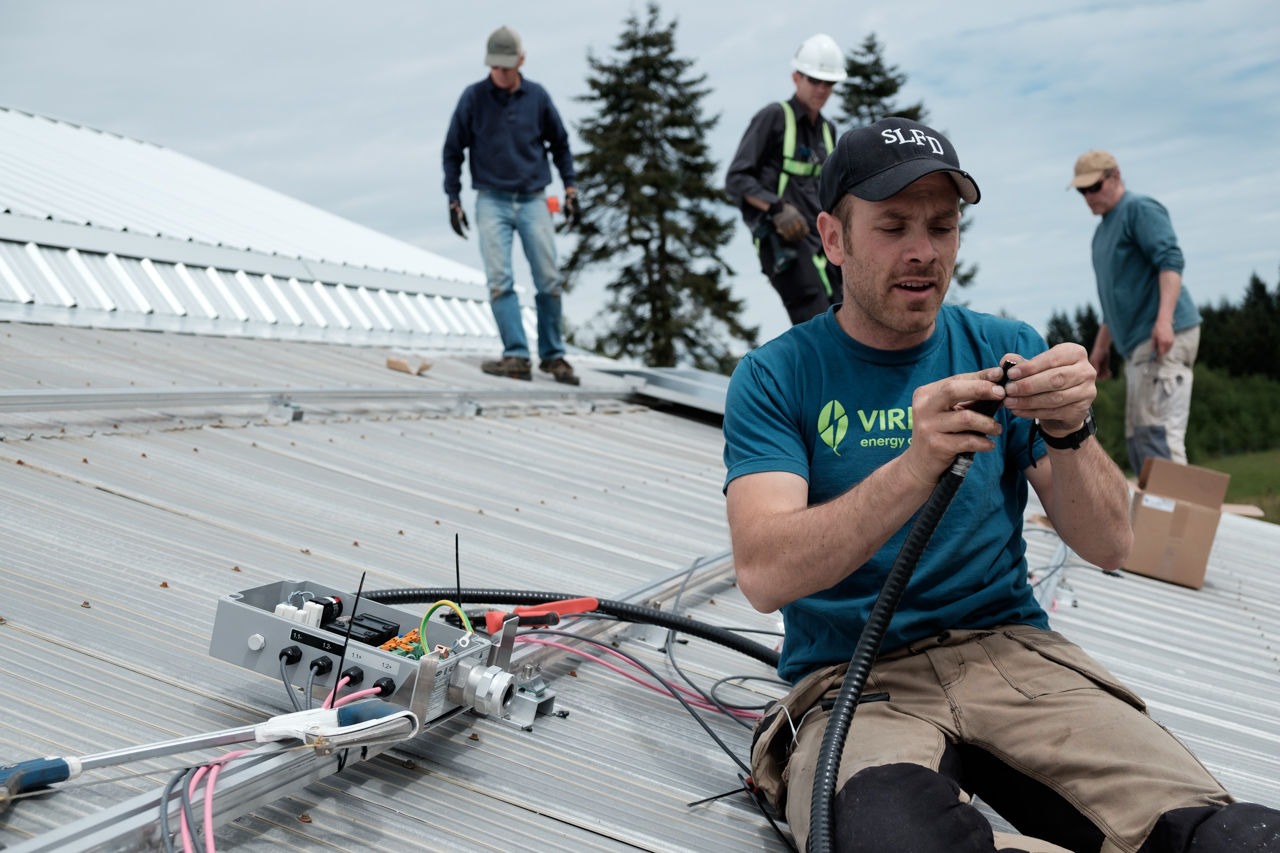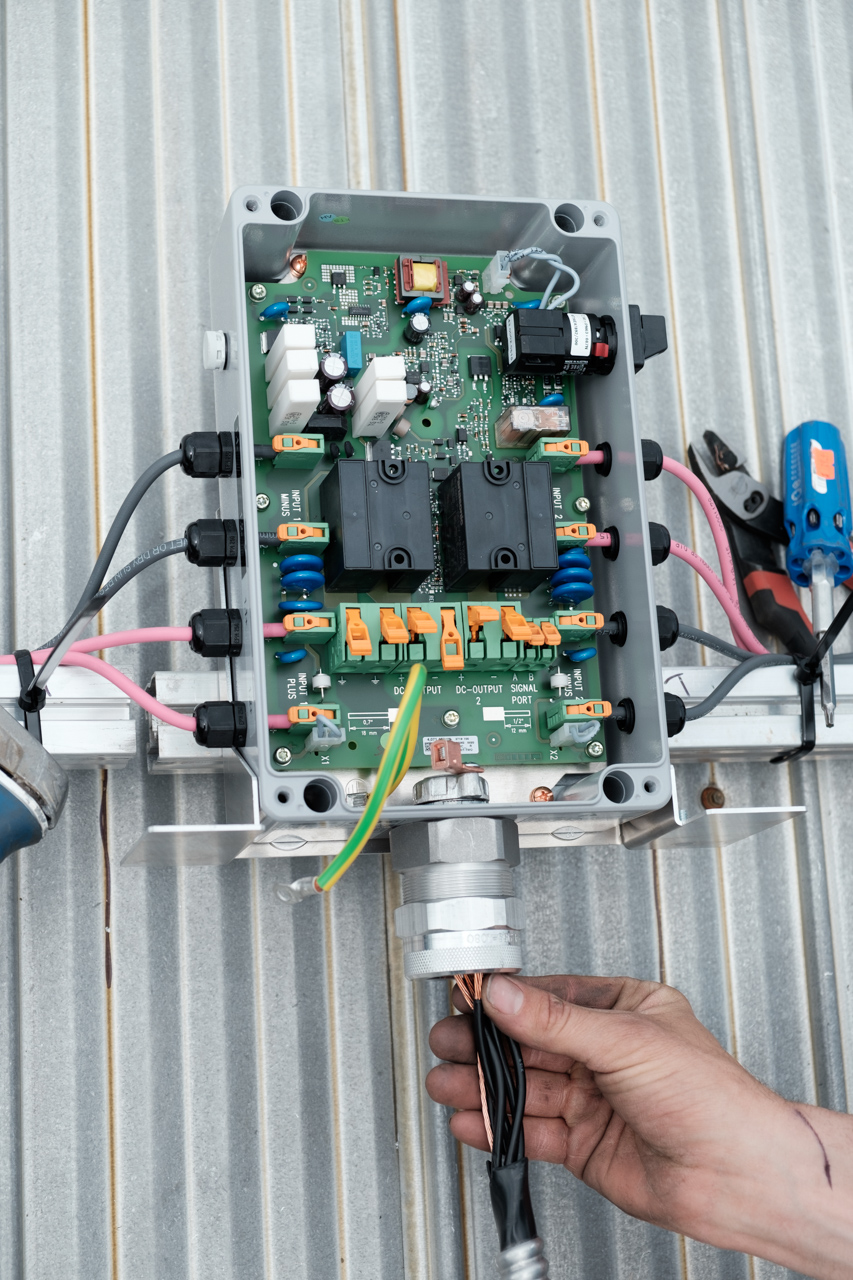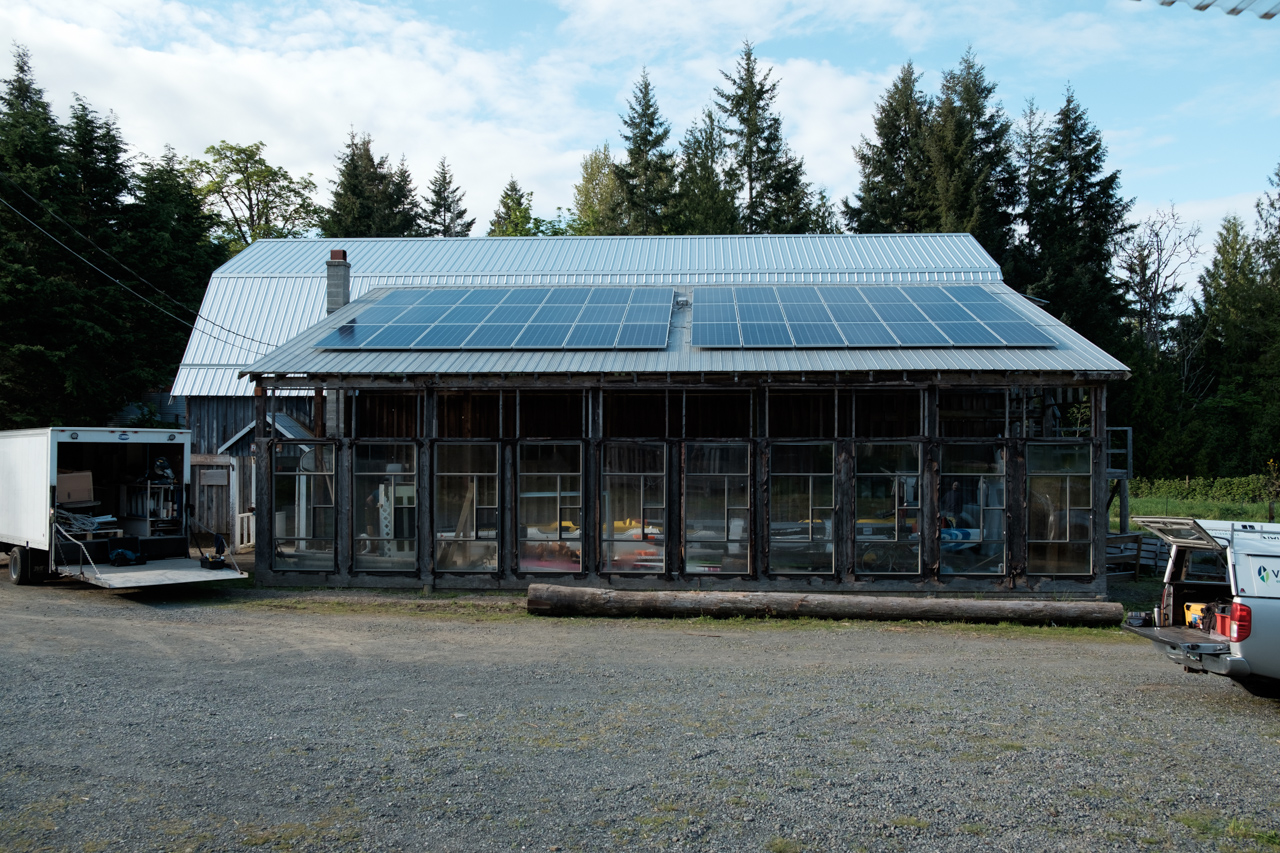Solar Panel Installation at Minto Road Farm
Grid TieMy name is Zoe Norcross-Nu’u. Like so many of us who live in coastal BC, I love the cliché big trees, open ocean waves, secret river swimming holes, and getting dirty on the farm with my daughters.
I work as an engineering analyst, and my job is implementing the watershed protection plan for Comox Lake. Before moving to Vancouver Island, I was a coastal geologist in Maui. I developed and taught a university course on sustainability-related issues and initiatives as part of my job.
During this process, I came to understand what a dire predicament we face regarding climate change, population growth, and pressures on our natural resources. After recovering from the initial grief that followed this realization, my husband and I decided to move to a farm in the Comox Valley and try to live a lower-impact lifestyle.
After my husband’s sudden death in 2013, our sprawling 1970s house felt too big for my two daughters and me, so I decided to renovate a character-filled (i.e. “decrepit”) 125-year-old farmhouse on my property and make it as cozy and efficient as possible. We used natural building techniques including a chip-slip thermal mass exterior wall, a composting toilet, and a passive solar design.
I had always been curious about solar power, and after learning from Viridian about the reasonable payback period, we decided to try to achieve net zero.
“Viridian Solar was called in early in the initial building design process to take part in a design charrette to examine the possibilities to make the renovation a net zero electricity project. The energy-efficient design, selection of building materials, and solar energy systems were key to making this possible. We created an energy model and built a solar electric system to match the energy load. We also left the possibility to expand the system if the energy calculations were off or if in reality more energy was used” recalls Kuan-Jian Foo of Viridian Solar Co-op.
Thirty solar panels (7.5kw) and one year after installation, my hydro bill netted out at about $-100, we did it! “It’s a testament to Zoe’s commitment to the environment and low-energy living that this worked out so well. A 7.5kW system will generate about 8500kWh per year.
The average house in BC uses 12,000kWh and on Vancouver Island upwards of 14,000kWh annually. This project is a great example of what can be done with our existing buildings and Zoe is a wonderful example of how we can all live in greater harmony with our planet.”
Meanwhile, on the other end of my farm where the heat lamps, freezers, livestock water de-icers, heat pumps and other necessary energy-hungry farm implements were running, several of my winter hydro bills had been over $1000.
Buoyed by the recent net-zero success of my home, I decided to install a solar array on the south-facing roof of my barn. I called Viridian and they were onsite for a consult the next day.
Two weeks and forty solar panels /13.4kw later (Viridian is fast!), I’m hoping to at least get out of tier two on my farm hydro bills, and aiming for a 15-year payback period It was definitely a tough decision to incur the debt for the solar panel arrays but the math suggests it’s a good investment.
“Zoe is also part of a growing trend of our past clients that look to expand their solar power systems after getting used to them. Many others are adding on to their existing power systems and we are now building expandability into the systems we put in ensuring future add-ons are possible and cost effective. You can start small and grow as you need to.”
It felt like the right thing to do and it feels great to be so much better insulated against changing hydro rates. My new favourite sound is the humming of the inverters on a sunny summer day! Minto Farm is powered by sunshine.
- 42 x Canadian Solar CSP-325 325 Poly Crystalline solar panels
- 1 x 8.2kW Fronius Primo Grid Tie inverter with Rapid Shutdown and Fronius Solar.Web monitoring
- Schletter Racking
